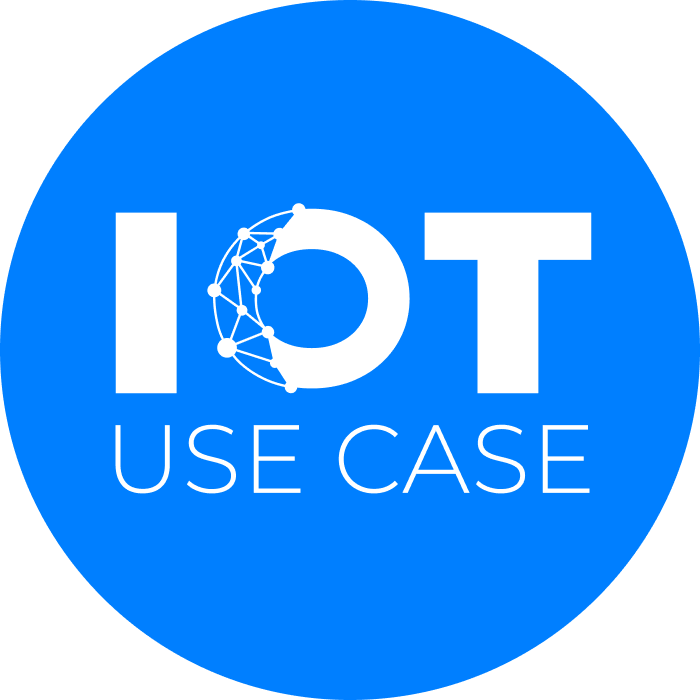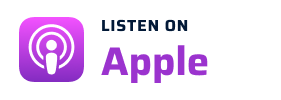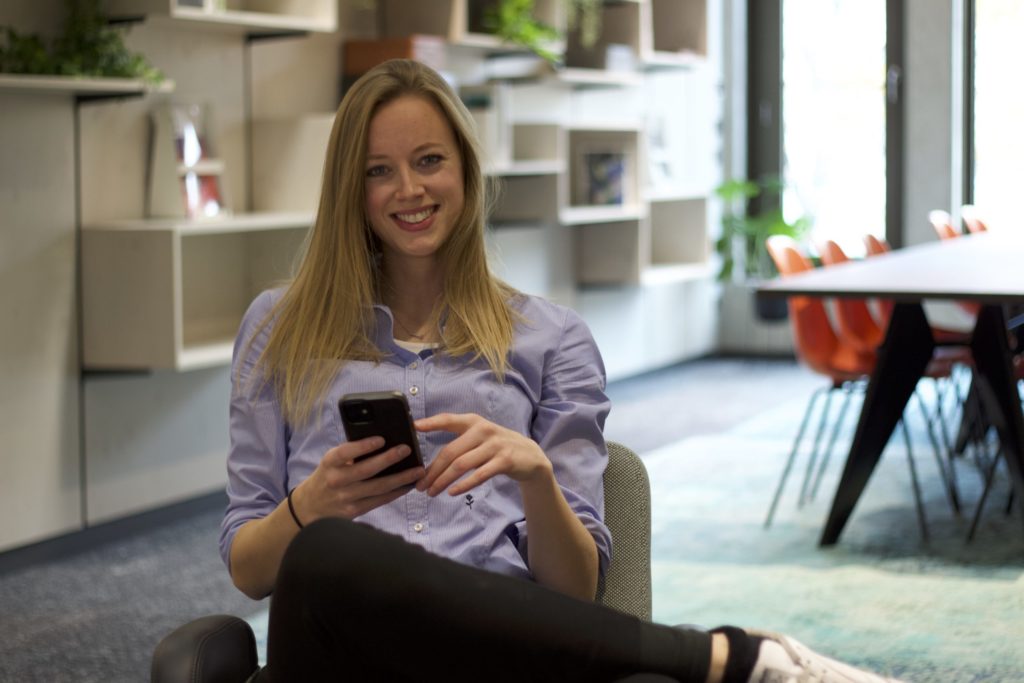Podcast episode summary
A key topic of discussion is the challenge of integrating various sensors, APIs, and communication protocols like LoRaWAN and mioty. Additionally, they discuss how these technologies are scalable to efficiently manage large industrial networks. A particular use case is the monitoring of pressure values at oil wells to ensure equipment integrity and avoid costly failures.
Furthermore, they explain how these technologies can be applied to other industries, such as geothermal energy, food, and pharmaceuticals. Finally, the guests provide a preview of upcoming trade shows, such as the SPS in Nuremberg and ADIPEC in the Middle East, where interested parties can gain further insights into their work.
Podcast interview
Today, I’m talking with Julian Studer, CEO and founder of LORIOT, a software provider and network operator for LoRaWAN use cases. We’ll soon explore what those use cases are. Also joining us today is Philipp Lausberger, an IIoT application specialist from WIKA, our IoT partner and a global leader in pressure and temperature measurement technology. Together, we’ll discuss which use cases can be solved with LoRaWAN technology, like vibration monitoring and valve positioning tracking, and highlight what makes them special through practical examples. All relevant information is available in the show notes and on iotusecase.com. Let’s dive in!
Philipp and Julian, welcome to the IoT Use Case podcast. Philipp, how are you and where are you right now?
Philipp
Thanks for the introduction. I’m doing well. Today, I’m working from my home office in the cellar. It’s nice and cool in the summer, and I’m looking forward to the podcast.
Great! And Julian, how are you and where are you today?
Julian
Thanks! I’m doing well. Just surprised by the drastic weather change, from 30 degrees a few days ago to 12 degrees now. Autumn, or almost winter, has come fast! I’m working from home, which has also become our headquarters since COVID. Our Swiss team mostly works remotely, so I’m both at home and at the LORIOT HQ in Zurich.
Greetings to Zurich! Could we start with a brief introduction? I’d love to hear more about you and your role at LORIOT.
Julian
As CEO, I have many responsibilities. I founded LORIOT nearly 10 years ago, in 2015, after working at UBS, Switzerland’s largest bank, in the investment sector. I transitioned from finance, where I focused on investment strategies, into IoT because the financial sector became too compliance-heavy and administrative for my liking. Many of my friends were in the software and IT sector, and after some research, I saw great potential in IoT—something I’m glad I pursued.
Right, and now you’re focused on low-power wide-area network technologies. I’m excited to discuss that further, along with what LORIOT does as a company. But first, Philipp, could you tell us about your role at WIKA?
Philipp
I’m the application specialist, serving as the link between sales and engineering. My role involves requirements engineering and understanding our customers’ needs, ensuring we solve their challenges rather than just offering technology. It’s important for us to understand what’s happening in the field, and that’s my focus.
Great. So, how did your companies connect?
Philipp
IoT isn’t a one-man show. We need strong partners. WIKA has been in the measurement technology field for 80 years, and we understand our customers’ processes well. However, to solve today’s challenges, we need more than just devices—we need platforms for data integration, and we have a very strong partner by our side.
Right, so that’s where LORIOT comes in. Julian, could you explain your part in these projects with WIKA?
Julian
In the meantime, I consider WIKA as part of the same big family. As Philipp mentioned, IoT remains complex, involving many steps to achieve the end result. IoT today is like assembling many puzzle pieces to form the big picture, as almost no company offers a complete vertical solution. You need gateways, sensors, hardware, security, communication, an LNS, APIs, and finally, visualization platforms. It’s nearly impossible for one company to excel in every aspect.
Our idea of partnering with WIKA came about because we didn’t need investment money at that time—we were growing organically—but having funds for growth is always beneficial. More importantly, we wanted to collaborate with WIKA because they are known as top experts in measurement technology. They had the hardware but not the software communication, while we had the communication and security but lacked the hardware. We decided to combine our strengths to offer a nearly complete vertical solution, both sides providing the highest quality in the market. Together, as hardware and software specialists, we complement each other to deliver a fully functional solution.
Philipp, let’s dive deeper into this. WIKA is known as one of the world’s leading manufacturers of sensors for pressure, temperature, force, and flow measurement. How is your market changing, and what’s the vision behind WIKA’s digitalization projects with your customers?
Philipp
Our vision is centered around smart sensing. We started as a traditional equipment manufacturer, producing pressure sensors and analog gauges. Today, many industries still rely on manual processes, like someone walking around with a clipboard, noting down critical values from assets such as oil and gas wells.
Our big vision is to improve customer processes by moving towards remote monitoring, integrating predictive maintenance, and providing solutions that seamlessly connect with existing systems.
Thanks for highlighting the industry challenges. Let’s now focus on a specific project. Can you explain the use case you’re working on together for a customer?
Philipp
Yes, today I’ve brought a special use case that focuses on the integrity of oil and gas wells. You need a valve to bring the oil or gas from underground to the surface—quite straightforward. The integrity of the well is crucial because you need to ensure that no oil leaks through the casings. Casings are essential for drilling the boreholes, and tubing pressures also need to be monitored. The pressure readings indicate the health of the well and can alert you to any anomalies.
Currently, this process is mostly analog, especially for idle wells that are no longer producing and are spread out over wide areas. For example, we have use cases in northern Germany, in regions like Lower Saxony, where there are legal requirements to monitor these wells regularly. However, with today’s manpower, it’s nearly impossible to do so cost-effectively. The same goes for large, remote oil fields in deserts like those in the Middle East or South America. In these areas, personnel are often driving 4×4 vehicles through challenging environments just to monitor casing or tubing pressure.
In the desert, you’re dealing with extreme conditions—dust, heat, fog, and sandstorms—which pose significant risks to personnel. These are the challenges we’re addressing by reducing human risk and saving money through automated monitoring, minimizing the need for manual efforts.
Let’s dive into the business case a bit more. So, the use case involves monitoring the health of oil wells, vibration monitoring of machinery and equipment, and controlling the flow of oil and gas. What’s the business case behind this for your customer? You mentioned cost reduction, but can you explain in more detail what customers are losing without this technology?
Philipp
Typically, you have two or three engineers or technicians driving around, and in the desert, for example, it can take one or two hours just to monitor a single oil well. That’s a significant loss of time, and as mentioned, there are also high risks for the staff in those harsh environments. With an IoT solution, you can get a measurement point in real-time—within a second—so you know exactly what’s happening at the well.
In terms of transparency, traditional monitoring is done quarterly, maybe monthly or weekly, which leaves large blind spots between checks. With LoRaWAN, for example, you can transmit data every one or two hours, giving you much better visibility. If there’s a failure, you can react much faster, avoiding damage or oil loss.
Alright, let’s talk about the technology behind this use case to ensure listeners from different industries can understand it. Do you see the potential to transfer this use case to other industries? Are the challenges similar across sectors?
Philipp
Yes, definitely. For example, in geothermal power distribution, you have similar infrastructure—drilling into the earth and pipelines, though in this case transporting steam instead of oil. The same principles apply: pressure drops can indicate the health of the system. This is also true in industries like food and beverage, or pharmaceuticals, where pressurized vessels and tanks are monitored manually. A drop in pressure might indicate an integrity issue, leading to contamination or spoilage, requiring the disposal of products.
Let’s talk about the data behind these systems. While sensors like yours provide data, sometimes other sources are involved. What type of data do customers typically need? Are they mainly using pressure and vibration sensors, or are there other types of data involved?
Philipp
It depends on the customer’s specific processes. In some cases, GPS tracking might be needed. We offer a range of sensors, including pressure, temperature, and level sensors, as well as vibration sensors for predictive maintenance on pumps, compressors, and motors. We also integrate third-party LoRaWAN sensors, such as those for valve positioning, which is crucial in oil fields and other industries. Our service includes selecting the right sensors and integrating them into one system, so the customer doesn’t have to worry about technical details like payload decoding.
Regarding technical challenges, what do customers typically struggle with in the field? Julian, do you have any insights into the technical challenges of bringing all these different data types into one system?
Julian
Yes, there are definitely challenges in transporting data. IoT is a broad term, and it’s important to clarify that we’re working with low-power wide-area networks, not high-power devices like mobile phones. The main technologies in this space are LoRaWAN, which is leading, and mioty, which emerged around three years ago, mainly for metering in very dense networks.
Once the sensors send data to the server, which is our responsibility, the key part is supporting various APIs. These APIs allow customers to push the data to any platform they choose. Many large companies we work with, like WIKA, have their own IoT platforms, but some also collaborate with visualization platforms such as Power BI, Microsoft, or Amazon for seamless integration. While we’ve faced some challenges, especially with integrating into large systems like Oracle or SAP, we always find solutions by collaborating with the end application producers.
Just to clarify the terms, you mentioned LoRaWAN, which stands for Long Range Wide Area Network. It’s a standard used for long-range communication, particularly suitable for the types of data and use cases we’re discussing, right?
Julian
Absolutely. Both technologies are designed for long-range and wide-area networks. To put it into perspective, Wi-Fi typically works for 10 to 15 meters before it loses signal, but it offers high data bandwidth with gigabytes transferred in milliseconds. In contrast, with the technologies we are using, you need a gateway, and depending on how frequently the sensors transmit data, one gateway can support up to 5,000 sensors. We’ve even measured distances of 100 to 150 kilometers in ideal conditions, where there’s direct line of sight to the sensor. In more realistic scenarios, such as in urban areas, the range is typically 15 to 20 kilometers, which is still more than sufficient for most industrial applications. If a larger area is needed, you can simply install additional gateways to extend the network.
LoRaWAN and mioty are quite similar technologies, though mioty has an advantage in terms of its telegram-splitting feature, which breaks the message into smaller parts, reducing the likelihood of data loss—up to eight times less data loss. mioty was primarily developed by the Fraunhofer Institute in collaboration with the metering sector, focusing on metering applications.
And it’s scalable, right? When you have thousands of devices in the field, mioty seems like a great option to handle millions of devices, based on the technology you’ve mentioned.
Julian
Absolutely. mioty is certainly a future-proof technology. However, I have to say that we haven’t encountered any major issues with LoRaWAN, even in dense networks. If networks become too dense, you can always add more gateways. Both technologies are excellent, but LoRaWAN has an edge due to its larger ecosystem, which has been growing since 2013. There are already many sensors, gateways, and solutions available. The mioty Alliance is working to catch up, but having a broad ecosystem is a big advantage. Ultimately, it’s up to the customer to decide which technology suits their needs best.
What’s unique about WIKA and LORIOT’s collaboration is that we offer a hybrid solution—our software solution and WIKA’s hardware allow customers to use either LoRaWAN, mioty, or even a combination of both, all within one platform and user interface.
Great. So, if anyone listening is interested in discussing their use case, they can reach out to Julian or Philipp for guidance on which technology suits their sensor types best.
Julian
Exactly. There’s always this question of which IT technology is the best. But, as I like to say, it’s like asking which car is the best for you—it depends on your needs. Are you going on a family trip, camping, or racing? The same applies to IoT technology. Depending on the use case, you’ll need different parameters, as you can’t optimize everything. For instance, long-range communication usually means lower data transfer rates because the data travels over different frequencies. It’s like trying to balance inflation and unemployment in economics—adjusting one will impact the other. You need to find the right balance depending on the specific use case.
That’s why I love talking about concrete use cases. It’s all about the type of data and the frequency required for each situation. Just to clarify, WIKA provides the hardware and sensor data, while LORIOT offers the technology and software, correct? Can you explain how the software works?
Julian
Yes, as I mentioned earlier, our software is essentially the brain and heart of the IoT system. It connects the sensors and gateways, handles data transmission, ensures security, and pushes the data to the necessary applications.
One of the biggest advantages of technologies like LoRaWAN and mioty is that they allow for private networks. For example, at LORIOT, we can install our software on a company’s premises, meaning that data doesn’t have to travel via 5G, LTE, or SIM cards through a telecom operator’s network. This is ideal for companies that don’t want their data leaving their premises.
With our on-premise solution, companies can connect their sensors and gateways and run a completely closed, isolated IoT network where no data enters or leaves without their control. Of course, they can still use APIs to send data to external platforms like Microsoft, Amazon, or IBM if needed, but they have full ownership and control over their data. This is especially important for large corporations, as one of their main concerns is data security and preventing cyberattacks. With our solution, they can fully control and secure their own network.
So, when we talk about LORIOT’s software, it’s essentially a network management solution, right? You manage different hardware components, like sensors, and you have the capability to manage devices and integrate data as needed. It’s a scalable network management layer.
Julian
Absolutely. It’s fully scalable thanks to our container-based system. The user interface is designed to be very user-friendly. The first step in building an IoT network is to connect the sensors. For instance, if you buy 20,000 sensors from WIKA, you need to register them somehow, and that’s where our software comes in. The network server lets you easily register sensors and gateways, which work similarly to Wi-Fi routers. From there, the data is transmitted to the server, and APIs can push the data.
Our network server also has various monitoring tools to check the quality of the signal, the sensors, and whether a gateway is online or offline. This is particularly important for our larger customers, such as telecom operators, who run massive networks and require detailed insights into network stability and health. We provide that kind of information.
Philipp, you’ve mentioned a few use cases already, because WIKA has many different customers. How do you now approach these customers with your offerings? It sounds like it’s pretty straightforward for someone to use this collaboration for their own use case, but how does the process work?
Philipp
We offer a holistic solution, from the sensor to the network management and all the way to the end platform. It really depends on what the customer wants. One key advantage is that the customer doesn’t need to coordinate with multiple companies. We provide a single point of contact, and from there, we distribute the work to our experts.
So, if someone has a use case and needs to bring it to life, they can easily reach out to WIKA or LORIOT, and the process is simple to get started, right?
Philipp
Yes, definitely.
And you both work together as partners on these projects?
Philipp
Always.
Julian
That was one of the main goals in coming together. As I mentioned earlier, IoT can still be quite complex when you’re trying to fit all the pieces together. For the end customer, we wanted to simplify this process by offering a nearly complete solution. We’ve managed to do this by providing the hardware, software security, and communication, while WIKA delivers specific end applications and visualization for the sensors. Sometimes, we work in the background, providing our solution to WIKA, but from the customer’s perspective, they only interact with one counterparty—WIKA. This makes everything easier, more transparent, and simpler for the end customer.
Simplicity is highly valuable because an end customer doesn’t want to juggle multiple providers for sensors, gateways, communication, and security. It gets too complex. Our goal is to provide a seamless, high-quality vertical solution.
Philipp
In most cases, we’re dealing with maintenance personnel who’ve known WIKA for years. This familiarity often opens the door for us. These customers aren’t typically concerned with the technical details—they just want an easy solution. That’s where we come in, offering a simple startup kit and a plug-and-play solution. LORIOT’s flexibility allows us to offer cloud-hosted network management as well as on-premise solutions. Although on-premise can require more setup, it’s incredibly easy to start testing the system and seeing the benefits. You can be up and running in half an hour without needing to worry about the technical details.
Exactly, because the focus is on getting the use case started and building the business case. Do you have any best practices to share when setting up similar use cases?
Philipp
In many cases, companies start with isolated solutions, like a gateway with a network management system running on it, but they quickly hit limitations. They might try to build an internal network, but that won’t always work efficiently. With a partner like LORIOT, it’s easy to set up a professional solution that’s not overly expensive. You don’t need to worry about what will happen in 10 or 20 years—you can start small, with a single use case like gas bottle monitoring, and expand over time by simply adding more sensors. You can keep the data local if needed, and it’s fully scalable and integrable as you grow.
Great.
Julian
I agree with Philipp. Some companies start with cheaper solutions, even open-source software, but they soon run into issues—whether it’s lack of support, not meeting standards, or the solution not being scalable.
It’s essential to have the right partners because IoT is still relatively new. Many companies don’t fully understand the technology yet. IoT is like a puzzle, and if one piece doesn’t fit—whether it’s the sensor, gateway, software, security, or APIs—the whole system can fail. If any component isn’t up to the required quality, you won’t get the data you need at the end of the process.
What WIKA and LORIOT ensure is that every part of the vertical solution has been thoroughly tested, approved, and fully integrated. That way, when a customer works with us, we can deliver a complete, reliable solution that’s proven to work.
Exactly. Thanks for summing that up. It’s crucial to have a scalable foundation for setting up both current and future use cases. Thank you both for sharing these use cases and explaining the benefits of your partnership and how the technologies work across your products. For those listening, your next opportunity to connect with Philipp and Julian might be at the SPS fair in Nuremberg, Germany, which I believe is in November. But if you’re listening after the event, no problem—you can still reach out to them. I’ll include their LinkedIn profiles in the show notes so you can get in touch directly.
For those in Germany, we’ll also have a community meetup on November 12th, and you’re invited to join us. I’ll put the link in the show notes as well. Philipp, I believe WIKA will have a booth at SPS, right?
Philipp
Yes.
Thank you both for your insights and best practices today. It’s been a great session. I’ll leave the final words to you. Have a great rest of the week, and thanks again!
Philipp
Thank you, Madeleine. It’s been great, just like last time, and I’m looking forward to our next podcast, or perhaps seeing you at SPS. If you’re in the Middle East, you can also join us at ADIPEC.
Julian
Thanks from my side as well, Madeleine, for the opportunity. I won’t be in Europe on the 12th, as Philipp mentioned, I’ll be at ADIPEC, the biggest oil and gas event worldwide. WIKA and I will be there doing business. To the listeners, I think it could be interesting if they had the chance to ask questions about what interests them in the IoT space. IoT is such a vast topic, and we’ve only touched on a fraction of what’s possible. It would be great to hear what they’d like us to explore next time. We could base a future podcast on their questions.
Thank you again for the invitation.
Thanks so much and have a great week. Bye-bye!
Julian
Bye.
Philipp
Bye.












